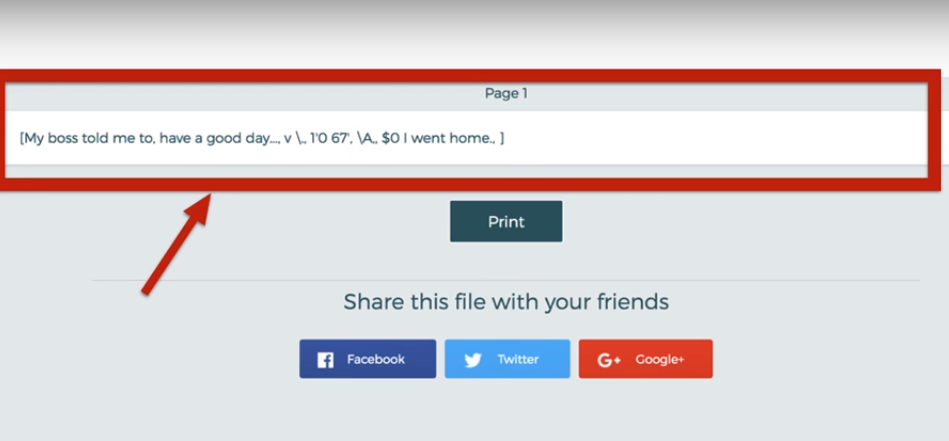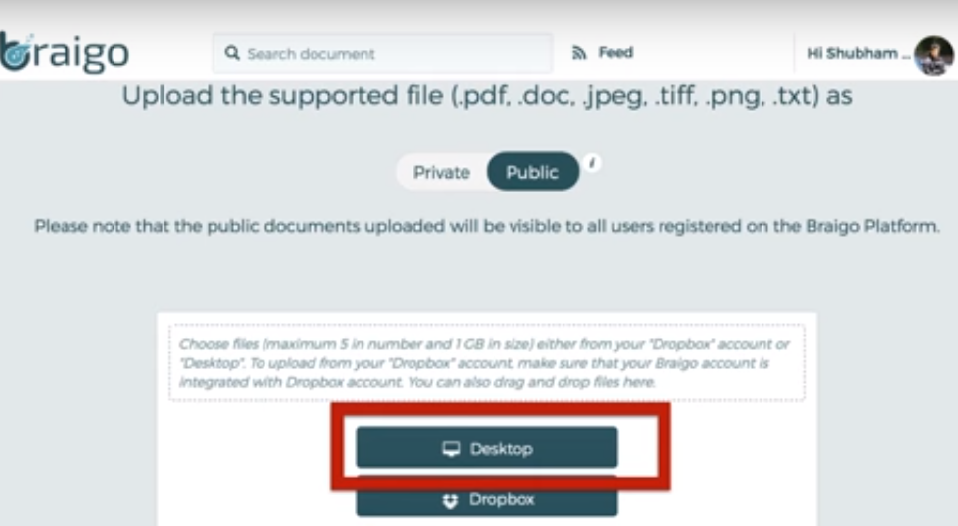Visually Impaired Extract Text & Visuals: Braigo Labs Releases Beta Version of Integrated Software Platform
 A large part of what continues to feed the 3D printing industry’s momentum is inspiration. It’s hard to imagine an industry that is led more fervently by such energy as we see innovation, startling and often stunning improvement on traditional processes—and yes, the arrival of that fourth industrial revolution everyone is talking about too.
A large part of what continues to feed the 3D printing industry’s momentum is inspiration. It’s hard to imagine an industry that is led more fervently by such energy as we see innovation, startling and often stunning improvement on traditional processes—and yes, the arrival of that fourth industrial revolution everyone is talking about too.
It’s incredible to see such progress in nearly every sector of industry, from metal 3D printed spinal implants changing lives in medicine to 3D printed wind turbines transforming the use of energy, and far more. But that inspiration and excitement goes much deeper when we see new products created by people (and in this case, a very young man!) who have a comprehensive understanding of a need and are able to meet that with a specific design or product that can truly enrich lives.
This was certainly the case two years ago when Shubham Banerjee—then a middle school student—began working on his concept for a Braille 3D printer after being inspired by a flyer asking for donations for the blind. He shut his eyes and tried to imagine what life was like without eyesight. After investigating more, he began learning about Braille printers already on the market with price tags of $2000 and up. He knew he wanted to build one that people could realistically think about buying.
“It got me thinking, there’s got to be a better option,” said Banerjee.
He began work on a science fair project, and the journey into creating an affordable Braille 3D printer commenced from there. Eventually, with invested money chipped in from his parents, and then more substantial funding from Intel Capital, Banerjee was not only the youngest inventor to be a venture capital backed entrepreneur, but also one of the youngest working in the 3D printing space.
“Intel Capital’s investment will help open up opportunities for me to work with professionals and eventually bring the product to more than 50 million blind people worldwide,” said Banerjee. “The braille market needed a disruption from price point and technology perspective.”
With the Braigo prototype, Banerjee originally estimated he would be able to make a Braille 3D printer for as much as 82% less. It runs on the Intel Edison chip, which is what piqued Intel’s interest initially. As Intel Capital learned more, they were compelled to provide the youngster with a substantial amount (undisclosed) for funding.
Founding Braigo Labs, Banerjee created the Braigo 1.0 (beginning with a Lego robotics kit), which may retail for as little as $350, and with the software he has created to work with it, the blind and visually impaired are able to experience features like affordable transcription. In the video below, Banerjee demonstrates how many pages (close to 200) can be printed off in 3D within around 30 seconds. This is just for the proof-of-concept prototype, however, with the Braigo not yet released and still in development.
“The capabilities of Edison enabled me to do a whole set of use cases I hadn’t previously thought about,” said Banerjee. “For example, when we wake up in the morning we look at our smartphone or tablet to see the headline news. With Edison, we’ve set it up so the CNN headlines are printed off automatically every morning.”
Currently, Banerjee and Braigo Labs are releasing the Braigo Platform to those interested in beta testing the product. This product is a direct result of Banerjee’s concern with how difficult and expensive it is for the visually impaired to get the same information sighted individuals receive on a free and constant basis—even from the most simple thing like a meme on social media.
While we’ve covered many specialty items for the visually impaired, from tactile books to musical notation—and even yearbooks—the key now with the Braigo and its software platform is to provide normal information, like the news, by way of an integrated software platform that enables text extraction from images. This means that essentially, the visually impaired person is able to ‘read’ any words accompanying visuals by having the text extracted and then translated into audio.
“Braigo Labs feels that technology can bridge the gap by creating a software platform for the visually impaired,” states the company in their latest press release. “We embarked on a journey to create one platform for accessibility needs with a roadmap that will try to integrate new and existing technologies as a complete solution under the Braigo Platform umbrella.”
The Braigo Platform web application is now available as a free download to anyone who needs solutions geared toward the visually impaired. This is a milestone, as Braigo begins their journey in offering assistance to the visually impaired with an integrated software solution. Multi-languge support is featured in over 50 languages, along with the creation of a user library for sharing, an automatic OCR text extraction.
“This is our step towards the right direction, based on the numerous and overwhelming feedback we received over time,” says Banerjee. “We are looking at Braigo as a whole product that creates, supports and expands an ecosystem for the visually impaired—not simply as a standalone software or hardware tool.”
Banerjee targeted four issues that the visually impaired are commonly experiencing:
No integrated solutions – downloading can be difficult, and also when different languages are involved. With Braigo, users look forward to uploading documents or pictures immediately, as well as being able to take a picture on your phone’s camera and upload it to Braigo for extraction.
“It’s absolutely a great platform and game changer,” stated one user, Aleena Che Ramli of Malaysia. “Simple, straightforward, elegant and user-friendly to new users and screen readers. I have uploaded a local language document (Malay) and selected English instead of Malay and it seems to work extremely well.”
Sharing of information is challenging – especially through social media and emailing. Braigo allows the user to look forward to privacy with documents when desired, in their library. Information can be shared with friends and family as well on social media.
Reading the news – one single site offers subscriptions to news feeds from any news sources from around the world.
Lack of cloud offerings – personal and business documents can be kept on the Dropbox utility.
“Managing business research and re-use of business documents is a breeze now,” explained another user, Nasreen Bhutta of Canada. “It’s so exciting, I can work and manage my team from anywhere as long I am connected to the internet! True Equality! The cloud platform does change everything.”
Banerjee’s goal is simple: to change lives. To do so, he and his company are driven to build an ecosystem that offers the most simple reward—to be able to have access to the written word and visuals and business materials, as well as storage for files—just like the rest of the world. With this platform, they are one step closer to their overall vision. As beta testing continues, Banerjee and Braigo will continue to ask users around the globe (so far, in six countries and four continents and multiple languages) to perform ‘rigorous testing’ with the platform and assess both its feasibility within their user context, as well as evaluating the user experience overall. Find out more at Braigo. Discuss further over in the Braigo for Visually Impaired forum over at 3DPB.com.
[Source / Images: Braigo]Subscribe to Our Email Newsletter
Stay up-to-date on all the latest news from the 3D printing industry and receive information and offers from third party vendors.
Print Services
Upload your 3D Models and get them printed quickly and efficiently.
You May Also Like
Nikon SLM Solutions Sells SLM 500 to Primary Weapon Systems to Expand Suppressor Production
Primary Weapons Systems (PWS) is a Boise, Idaho-based manufacturer of suppressors, firearms, and related components. A subsidiary of Vigilant Gear and a sister company to aftermarket Glock slide manufacturer Lone...
3DPOD 261: Tooling and Cooling for AM with Jason Murphy, NXC MFG
Jason Murphy´s NXC MFG (Next Chapter Manufacturing) is not a generalist service; instead, the company specializes in making tooling. Using LPBF and binder jet, the company produces some of the...
HP and Firestorm Labs Form Partnership to Use Multi Jet Fusion 3D Printers in Deployable Factories
HP Inc., maker of a range of additive manufacturing (AM) solutions including the Multi Jet Fusion (MJF) ecosystem, has announced a partnership with Firestorm Labs, a developer of containerized, deployable...
3D Printing News Briefs, July 2, 2025: Copper Alloys, Defense Manufacturing, & More
We’re starting off with metals in today’s 3D Printing News Briefs, as Farsoon has unveiled a large-scale AM solution for copper alloys, and Meltio used its wire-laser metal solution to...



































